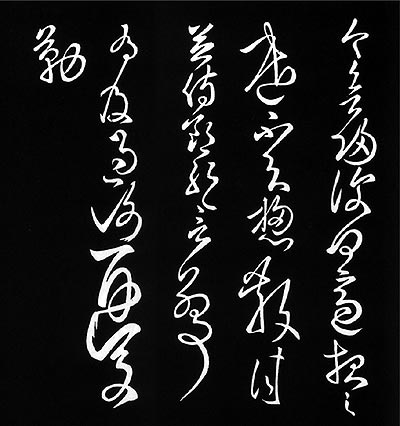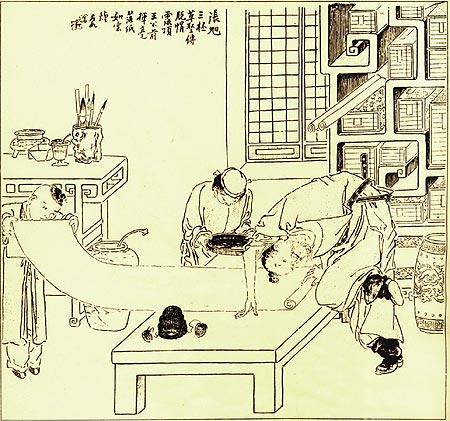CAOSHU (CURSIVE) AND XINGSHU (SEMI-CURSIVE): WRITINGS ON THE RUN Caoshu and Xingshu Scripts were two easy-to-write forms invented for great efficiency
 |
Xingshu (Semi-cursive, or "Running Script") came into vogue dring the Wei and Jin Periods (220-420). It combined practical use with aesthetic value. Portrait of Wang XiZhi, the great Jin calligrapher famed for his semi-cursive writing. |
 |
Tang Dynasty copy of Lan Ting Ji Xu |
 |
Jincao (modern cursive script) was initiated by Zhang Zhi. His calligraphy is also called "one stroke writing" for its fast movement and countinuity. |
 |
Caoshu Script has three categories: Zhangcao, Jincao and Kuangcao. Wood slips written in Zhangcao Script. |
 |
Kuangcao ("Wild Cursive") was invented by Zhang Xu. As the characters are written too speedily to be recognizable, this kind of writing is valued mostly for aesthetic reasons. A Qing portrait of Zhang Xu at his writing. |
 |
"Orchid Pavilion Steles" of Zhejiang, China, where Wang Xzhi created his masterpiece Lan Ting Ji Xu (Preface to the Orchid Pavilion Collections), the greatest known example of semi-cursive Chinese calligraphy. |
KAISHU (Standard Script): MODEL WRITINGS
 |
At the end of the Eastern Han Dynasty (25-200), a new form of handwriting, Kaishu, came into being. The initiator of Kaishu was Zhong You (above). |
 |
Smooth in line, square in shape, and very easy to write, Kaishu is regarded as "Standard Script", as it can be used as a model for other forms of writing. It remains the standard written Script of Chinese today. Zhong Yao's Xuanshi Proclamation. |